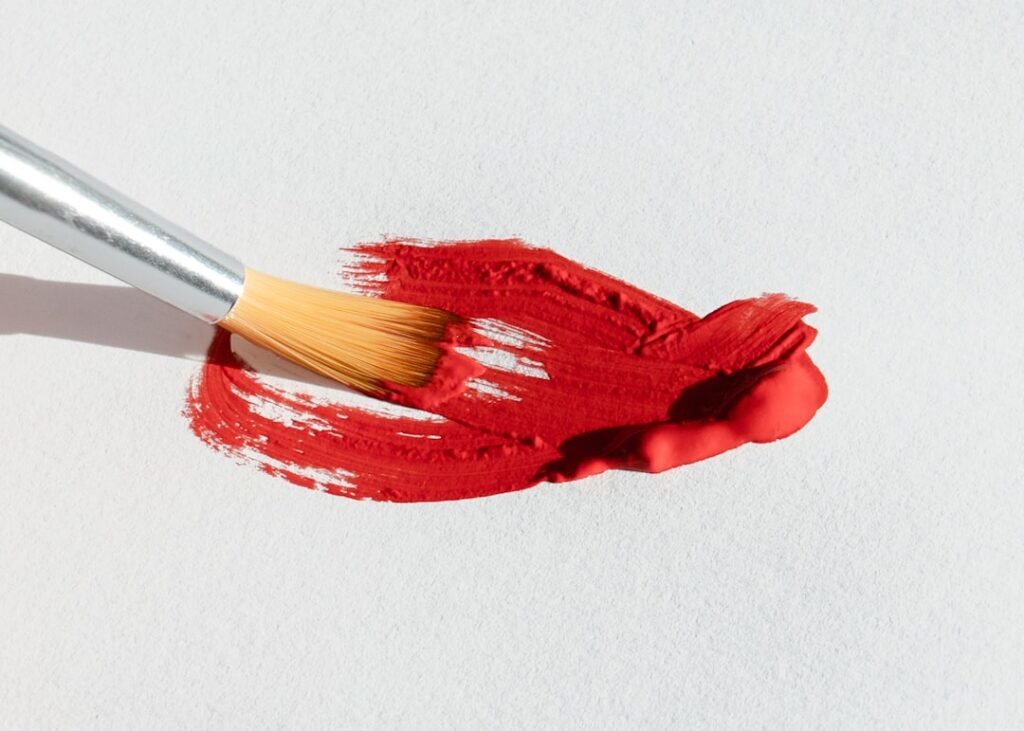Interior painting is the process of applying paint to the walls, ceilings, and other surfaces inside a home or building. It is a popular way to refresh and update the look of a space, as well as protect the surfaces from wear and tear. Interior painting can completely transform the atmosphere of a room, making it feel brighter, larger, or more cozy depending on the color and finish chosen.
There are several benefits to interior painting. First and foremost, it allows homeowners to personalize their space and create a look that reflects their style and personality. Whether you prefer bold and vibrant colors or soft and neutral tones, interior painting gives you the opportunity to make your home truly your own.
Additionally, interior painting can increase the value of your home. A fresh coat of paint can make a space look well-maintained and updated, which can be appealing to potential buyers if you ever decide to sell your property. It is a relatively inexpensive way to give your home a facelift and make it more marketable.
Finding the Best Interior Painters Near You
When it comes to finding the best interior painters near you, there are several steps you can take to ensure you hire a reputable and skilled professional.
One of the first things you can do is research for interior painters in your area. Look for companies or individuals who specialize in interior painting and have positive reviews or testimonials from previous clients. This will give you an idea of their reputation and the quality of their work.
Another way to find interior painters is by asking for referrals from friends, family, or neighbors who have recently had their homes painted. Personal recommendations can be valuable because you can trust that someone you know has had a positive experience with the painter they are recommending.
In addition to personal referrals, checking online reviews can also be helpful in finding the best interior painters near you. Websites like Yelp or Angie’s List provide a platform for customers to leave feedback and ratings for local businesses, including painters. Reading through these reviews can give you insight into the painter’s professionalism, reliability, and the quality of their work.
Factors to Consider Before Hiring an Interior Painter
Before hiring an interior painter, there are several factors you should consider to ensure you make the right choice for your project.
Experience and expertise are important factors to consider when hiring an interior painter. Look for someone who has been in the industry for a significant amount of time and has a portfolio of completed projects that showcase their skills. An experienced painter will have the knowledge and expertise to handle any challenges that may arise during the painting process.
It is also important to hire an interior painter who is licensed and insured. This protects both you and the painter in case of any accidents or damages that may occur during the project. A licensed painter has met certain requirements and standards set by the state or local government, ensuring that they are qualified to perform the work.
Cost and budget are also important considerations when hiring an interior painter. Get quotes from multiple painters and compare their prices to ensure you are getting a fair and competitive rate. Keep in mind that the cheapest option may not always be the best choice, as quality and expertise should also be taken into account.
Availability and timeline are other factors to consider before hiring an interior painter. Discuss your project timeline with potential painters and make sure they can accommodate your schedule. It is also important to clarify how long the project will take so you can plan accordingly.
Tips to Choose the Right Color Scheme for Your Home
Choosing the right color scheme for your home can be a daunting task, but with some tips and considerations, you can find the perfect colors that suit your style and create the desired atmosphere in each room.
One important factor to consider when choosing colors is color psychology. Different colors evoke different emotions and moods, so think about how you want each room to feel. For example, blues and greens are often associated with calmness and relaxation, while yellows and oranges can create a sense of energy and warmth.
Another consideration is the purpose of each room. Think about how you will be using the space and choose colors that align with that purpose. For example, a bedroom may benefit from soothing and neutral colors to promote relaxation, while a home office may benefit from brighter and more stimulating colors to enhance productivity.
It is also important to consider the existing decor in your home. Take note of any furniture, artwork, or accessories that you plan to keep in each room and choose colors that complement or enhance those pieces. This will create a cohesive and harmonious look throughout your home.
Before committing to a color scheme, it is always a good idea to test samples on your walls. Paint small patches of different colors and observe how they look in different lighting conditions throughout the day. This will give you a better idea of how the colors will appear once they are applied to the entire room.
How to Prepare Your Home for Interior Painting
Properly preparing your home for interior painting is crucial to ensure a smooth and successful project. Here are some steps you can take to prepare your home before the painters arrive.
Start by clearing the room of furniture and decor. Move any large furniture pieces out of the room or into the center of the space and cover them with plastic or drop cloths to protect them from paint splatters. Remove any smaller items from shelves, tables, or walls and store them in a safe place.
Next, clean and prep the walls. Dust and wipe down the surfaces to remove any dirt or grime that may interfere with the paint’s adhesion. If there are any holes or cracks in the walls, fill them with spackle or putty and sand them smooth once dry.
Cover floors and surfaces with drop cloths or plastic to protect them from paint drips or spills. Use painter’s tape to mask off any areas that you want to keep paint-free, such as baseboards, trim, or windows. Make sure the tape is applied securely and remove it carefully once the paint is dry to avoid peeling off any paint.
Lastly, gather all the necessary tools and materials for the painting project. This includes paint brushes, rollers, trays, extension poles, and any other supplies recommended by the painter. Having everything ready before the painters arrive will help streamline the process and ensure a more efficient and organized project.
Interior Painting Techniques for a Professional Finish
To achieve a professional finish when painting your interior walls, it is important to use proper techniques and tools. Here are some tips to help you achieve a flawless result.
When using a brush or roller, it is important to use smooth and even strokes. Start by cutting in corners and edges with a brush before using a roller to cover larger areas. This will ensure that you have clean lines and no visible brush marks.
Applying multiple coats of paint is also important to achieve an even and consistent finish. Allow each coat to dry completely before applying the next one. This will help build up the color and coverage, especially if you are painting over a darker or heavily textured surface.
Using painter’s tape can be helpful when painting near trim, baseboards, or other areas that you want to keep paint-free. Apply the tape carefully and press it down firmly to create a tight seal. Remove the tape slowly and at an angle once the paint is dry to avoid peeling off any paint.
Other tools that can be helpful during the painting process include extension poles for hard-to-reach areas, paint trays with liners for easy cleanup, and angled brushes for cutting in corners and edges. Using high-quality tools will make the painting process easier and help achieve a more professional result.
Choosing the Best Paint Type for Your Home
Choosing the best paint type for your home depends on several factors, including the room’s purpose, the amount of traffic it receives, and your personal preferences. Here are some considerations to keep in mind when selecting paint for your interior walls.
There are several different types of paint to choose from, including latex, oil-based, and specialty paints. Latex paint is the most common and versatile option, as it is easy to clean up with water, dries quickly, and has low levels of volatile organic compounds (VOCs). Oil-based paint is more durable and provides a smoother finish, but it takes longer to dry and requires mineral spirits for cleanup.
Consider the purpose of the room when choosing paint. For high-traffic areas like hallways or children’s rooms, a more durable and washable paint may be preferable. In areas with high humidity, such as bathrooms or kitchens, consider using a paint specifically formulated for moisture resistance.
The finish of the paint is another important consideration. Matte or flat finishes are great for hiding imperfections on walls but can be difficult to clean. Satin or eggshell finishes have a slight sheen and are easier to clean, making them suitable for living rooms or bedrooms. Gloss or semi-gloss finishes are highly durable and easy to clean, making them ideal for kitchens or bathrooms.
If you are concerned about the environmental impact of paint, look for eco-friendly options that have low VOC levels. These paints are better for indoor air quality and have less of an impact on the environment.
How to Maintain Your Newly Painted Interior
Once your interior walls are freshly painted, it is important to properly maintain them to ensure they stay looking their best for years to come. Here are some tips for maintaining your newly painted interior.
Regular cleaning and dusting is important to keep your painted walls looking fresh. Use a soft cloth or duster to remove dust and dirt from the surfaces. Avoid using harsh chemicals or abrasive cleaners, as they can damage the paint. Instead, use mild soap and water for any stubborn stains or marks.
Touching up small areas is also a good way to maintain your newly painted interior. Keep some extra paint on hand in case of any scratches or scuffs that may occur over time. Use a small brush or roller to touch up the affected areas, blending the new paint with the existing paint for a seamless finish.
Avoid using harsh chemicals or cleaners on your painted walls, as they can strip away the paint or cause discoloration. Stick to mild soap and water for cleaning and avoid scrubbing too vigorously.
Keeping humidity levels in check is also important for maintaining your newly painted interior. High humidity can cause paint to peel or bubble, so use dehumidifiers or fans to keep the air dry. Avoid hanging wet clothes or towels directly on painted walls, as the moisture can seep into the paint and cause damage.
Benefits of Hiring Professional Interior Painters
While some homeowners may choose to tackle interior painting as a DIY project, there are several benefits to hiring professional interior painters.
One of the main benefits of hiring professionals is that it saves time and effort. Painting an entire home can be a time-consuming task, especially if you have limited experience or are juggling other responsibilities. Professional painters have the skills, tools, and manpower to complete the job efficiently and in a timely manner.
Professional painters also bring expertise and quality to the table. They have years of experience in the industry and know the best techniques and materials to use for each project. They can provide advice on color selection, finishes, and other aspects of the painting process to ensure you achieve the desired result.
Access to professional tools and materials is another advantage of hiring interior painters. Professionals have access to high-quality paints, brushes, rollers, and other tools that may not be readily available to homeowners. This can result in a higher quality finish and longer-lasting results.
Lastly, hiring professional interior painters often comes with a guarantee or warranty. This means that if any issues arise after the project is completed, the painters will come back and fix them at no additional cost. This provides peace of mind and ensures that you are satisfied with the final result.
Frequently Asked Questions about Interior Painting
1. How long does interior painting take?
The duration of an interior painting project depends on several factors, including the size of the space, the number of coats needed, and the complexity of the project. On average, a single room can take anywhere from a few hours to a few days to complete.
2. How much does interior painting cost?
The cost of interior painting varies depending on factors such as the size of the space, the type of paint used, and the complexity of the project. On average, homeowners can expect to pay between $2 and $6 per square foot for professional interior painting.
3. Can I paint over wallpaper?
In most cases, it is possible to paint over wallpaper. However, it is important to properly prepare the wallpaper before painting to ensure adhesion and a smooth finish. This may involve cleaning the wallpaper, applying a primer, or removing any loose or damaged sections.
4. What if I don’t like the color after it’s painted?
If you don’t like the color after it’s painted, there are a few options available. You can repaint the walls with a different color or hire professionals to do so. Alternatively, you can try using different decor and accessories to change the look and feel of the space without repainting.
5. How often should I repaint my interior?
The frequency of repainting your interior walls depends on several factors, including the quality of the paint used, the amount of wear and tear on the walls, and personal preference. On average, interior walls should be repainted every 5 to 10 years to maintain a fresh and updated look.
Looking for interior painters near you? Check out this informative article on interior painting by Painters in McDonough. They offer a wide range of services including residential painting, commercial painting, and even exterior painting. Whether you need your walls refreshed or your wood deck refinished, their team of professionals has got you covered. With their expertise in staining cedar siding, aluminum siding painting, and even hardieplank siding painting, you can trust them to transform your home’s interior into a beautiful and inviting space. Don’t hesitate to contact them for all your painting needs! Read more



